5 Baby Steps of Stockpiling
When you are working on building a stockpile of food, the question comes up again and again, “How much food do I need to stockpile per person?” It is a very important question, and one that I am going to attempt to answer. It’s a difficult question that requires a lot of thought, and I admit that it feels overwhelming – to all of us! The best way to figure out how much you should have in your stockpile is to make a plan for your family.
Remember that everyone’s stockpile is going to look different, due to practical choices and personal preferences. If you follow these 5 important rules of stockpiling, the process will be much easier.
By building a stockpile of food, remember that you are taking care of your family. You are building a practical emergency fund of food to help see you through whatever may come.
You can build your stockpile in gradual increments. You don’t have to do it all at once! Look at what you have already and make a plan to start building on that. This is where the baby steps come in.
I wish I could give you a simple and clear answer to how much you should stockpile. Unfortunately, there is no good answer because there is no one size fits all when building a stockpile.
Every family is different. We have a different number of people, at varying ages. We may have allergies or not. We may be comfortable with a month’s worth of food or maybe 6 months is still not enough for you. You need to look at your family and make those stockpile decisions.
Yes, you could use food calculators to tell you how many pounds of food to store per person for a year, but building a stockpile is so much more than that. If you want to build a long term food storage system, those calculators might have a time and place for you. But first?
You need to start with the baby steps of stockpiling.
If you are asking yourself, “How much food storage do I need?” Then let’s start here. Let’s make stockpiling manageable so we don’t get overwhelmed with all there is to do.
Trust me! I’ve had a stockpile for years, but as I look at increasing my stockpile (with everything going on in the world right now), it is still overwhelming. That’s how I came up with these simple baby steps.
If you focus on completing one step at a time, your stockpile will grow more quickly. It’s the same as when using Dave Ramsey’s baby steps, because your progress will help you snowball into the next step.
This post may contain affiliate links. As an Amazon Associate, I earn from qualifying purchases. You can read more in my disclosure policy.
Baby Step 1: Begin by stockpiling 3 days of food and water.
This is a pretty basic recommendation, and I would hope that most of us have at least this much food. If not, you should be able to accomplish this baby step quickly! The goal here is to also store water (in case of an emergency).
Recommendations are 1 gallon of water, per person, per day. Multiply that by 3 to get your total. You can store water in gallons of water or a 5 gallon water jug or even cases of bottled water. It shouldn’t take you too long to do this, so just get it done!
This is the absolute bare minimum everyone should have stored in their stockpile.
As for food, look around your pantry and kitchen. If you couldn’t leave your home for the next 3 days, what would your family eat for breakfast, lunch and dinner? Do you have enough food to cook from, in case of an emergency?
At this point, I wouldn’t worry too much about losing power or your freezer. Just look at the food you have at home in your pantry, fridge and freezer. Do you have enough food for everyone in your family to eat for 3 days? If not, make a plan to buy some quick and easy meals to store for an emergency. Mac & cheese, pasta, canned soup, boxes of cereal, oatmeal…anything your family likes that you could quickly prepare.
While experts recommend 3 days of food, I would encourage you to think in terms of 3 to 7 days, as your first stockpiling baby step.
Baby Step 2: Increase your stockpile to 2 weeks of food and water.
Let’s start again with the water. Why is this important? If you lose power or have a natural disaster, water is really important. I’ve always known this but it wasn’t until this year that I’ve actually started working on adding water to my stockpile. Did you know that all emergency resources actually encourage you to have a 2 week supply of water stored?
It was rather intimidating to me because my family of 6 would need 84 gallons of water stored for 2 weeks. It became easier once I started thinking outside the box.
Did you know that the 40 packs of individual bottles of water equal 5 gallons of water? Those stack well and I’ve decided are an easy way to store water that can be rotated. It was actually the cheapest way to build our water (currently $3.18 at Sam’s Club per 40 pack of water). For $50, and a couple Sam’s shopping trips, we were able to cross this off our list! Don’t wait as long as I did. I really encourage you to make water storage a priority.
Once you have 2 weeks of water stored, start thinking about food. Again, most of us probably have 2 weeks of food stored in our pantry. We may have to get creative but there should be options in our pantry to feed our family for two weeks. If not, start thinking about what your family eats regularly and add those foods to your stockpile.
If you are having trouble thinking of ideas, here are 10 things anyone can easily stockpile.
The easiest way to build a stockpile is to buy 1 for now and 2 (or more) for later, every time you see a great sale. This helps you build your stockpile without increasing your budget…too much! Plus, it keeps you focused on buying things your family regularly eats and uses, so nothing is wasted.
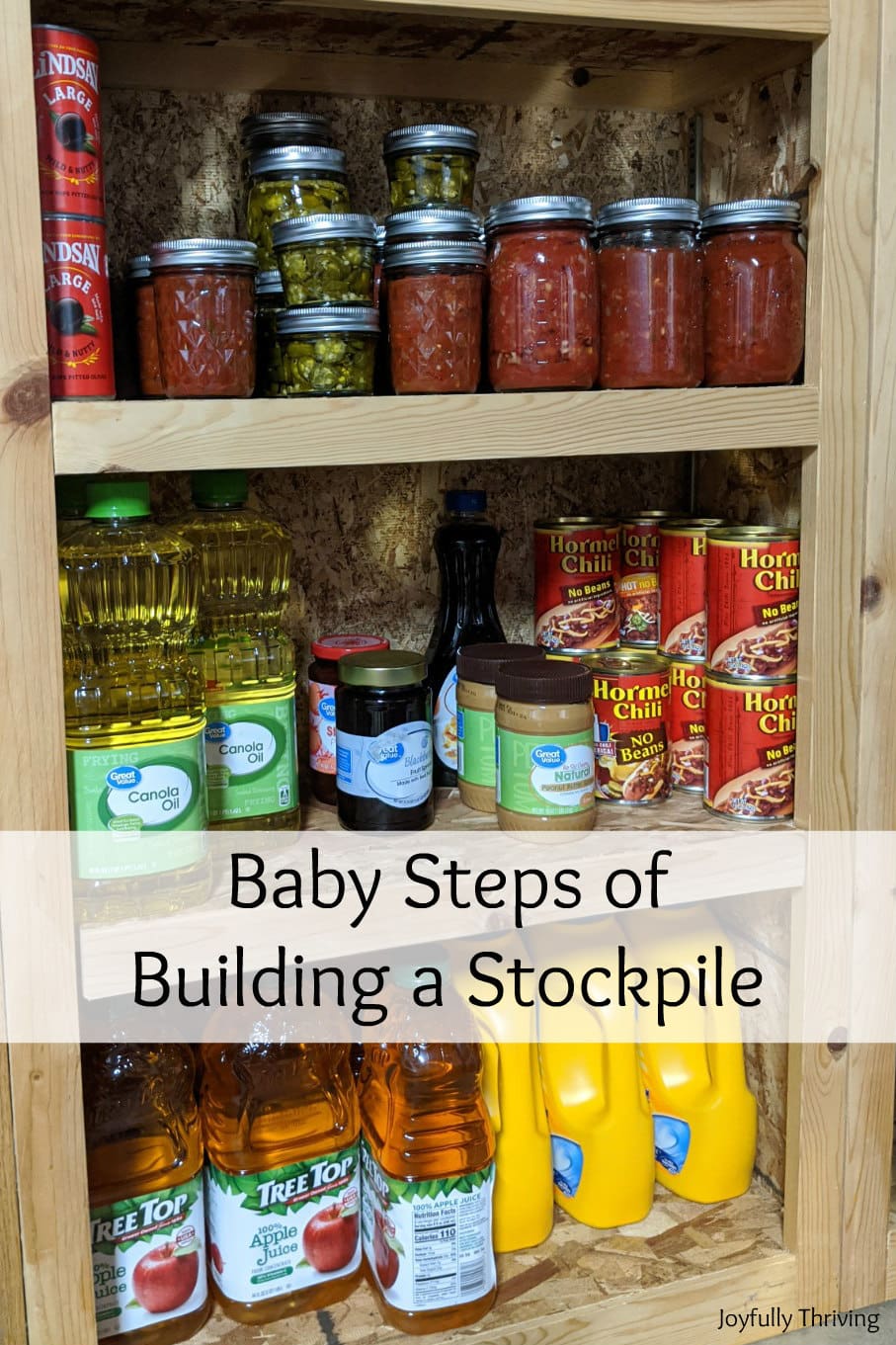
Baby Step 3: Increase your stockpile to one month of food stored.
This is where most of us are going to have to start really taking a good look at our stockpile. My family is used to eating homemade bread, but we can’t have it if I run out of flour and yeast. We need more than just applesauce as our fruits. We could eat oatmeal and pancakes for breakfast every day, but not if I don’t have oats and a bit of brown sugar.
Start tracking everything you open and how long it takes you to use it up.
You can do this by writing the date on every bottle or box when you open it. Food, toiletries, laundry detergent, you can do it all!
If you use 4 rolls of toilet paper a week, multiple that by the weeks in a month to know how much you really are using. If you use one jar of peanut butter a week in packing school lunches, make sure you have at least 4 jars in your stockpile.
Use the numbers you track to build an accurate stockpile. It is so easy to guess and think you have enough! I know this experiment has been incredibly enlightening to me.
Another way to figure out your 1 month goal is to look at the meals you eat regularly, and write down the ingredients needed, plus multiply by the number of times you plan to eat that meal every month. This will help you figure out some numbers more quickly, but it may not be as accurate as tracking everything you open.
From this, make your list of what you need to have in your one month stockpile. Remember, store what you eat, and eat what you store. It is very important you don’t waste your time and money.
Make a detailed shopping list and watch the sales. When you see a great deal, buy extra and add it to your stockpile.
As important as a stockpile is, don’t break your budget to build one. If you can set aside a bit of extra money to devote to building your stockpile, even $25 extra a month, will really help you build your stockpile a bit more quickly. Otherwise, watch for sales and add to your stockpile as your budget allows. Even a couple extra sale purchases a week will really start adding up!
Baby Step 4: Aim for a 3 month supply of food in your stockpile.
If you develop a good plan for a 1 month stockpile of food, increasing it to 3 months should be relatively simple. Take your 1 month food stockpile list and multiply it by 3, to increase your food supply.
Then, simply start continue shopping and watching your stockpile grow.
Don’t forget to include things like diapers and wipes, toiletries, laundry detergent, paper towels, and yes, toilet paper. Anything you use on a regular basis can be included in your stockpile. It doesn’t need to be just limited to food!
Here are some suggestions of how much a family could start stockpiling in the 1 to 3 month range.
Please note that this is a list of suggestions to get you started thinking! This is not my final stockpiling list, nor should it be yours. Create a stockpile that is filled with things you use regularly. Some ideas may include things from the following list.
- Flour – 25 – 50 lbs (depending on how much baking you do)
- Sugar – 16 lbs
- Powdered / Brown Sugar – 6 lbs each
- Yeast – 2 lbs
- Canola Oil – 4 bottles
- Olive Oil – 1 large bottle
- Honey – 2 bottles
- Quick & Old Fashioned Oats – 4 lbs each
- Chocolate Chips – 6 bags
- Apple Juice – 6 bottles
- Applesauce – 10 jars
- Canned fruit – 12 cans
- Popcorn – 4 lbs
- Canned Refried Beans – 12 cans
- Canned Green Beans – 12 cans
- Canned Corn – 12 cans
- Frozen Vegetables – 12 bags
- Canned Tomatoes – 12 cans
- Tomato Sauce / Paste – 12 cans
- Canned Spaghetti Sauce – 6 jars
- Canned Pumpkin – 6 cans
- Canned Soups (Cream of Chicken, Tomato) – 12 cans
- Salsa – 6 jars
- Crackers – 4 boxes
- Black olives – 6 cans
- Pasta – 6 boxes
- Peanut butter – 6 jars
- Syrup – 2 bottles
- Cereal – 4 boxes
- Tortilla chips – 6 bags
- Laundry Detergent – 5 bottles
- Tissues – 6 to 12 boxes
- Toilet paper – 48 rolls
- Paper towels – 6 to 12 rolls
You’ll notice that many of my amounts are in the 6 or 12 range. It is easy to buy things in those sizes, especially if you are shopping at Sam’s Club or Costco. Now, I am NOT saying you need to shop at these places. For many things, you will get better deals when shopping the sales at your local grocery store.
These quantities may work for a smaller family but they may need to be increased for a larger family. The best way to do that is start tracking what you buy each week and how quickly you go through it. Start storing those foods.
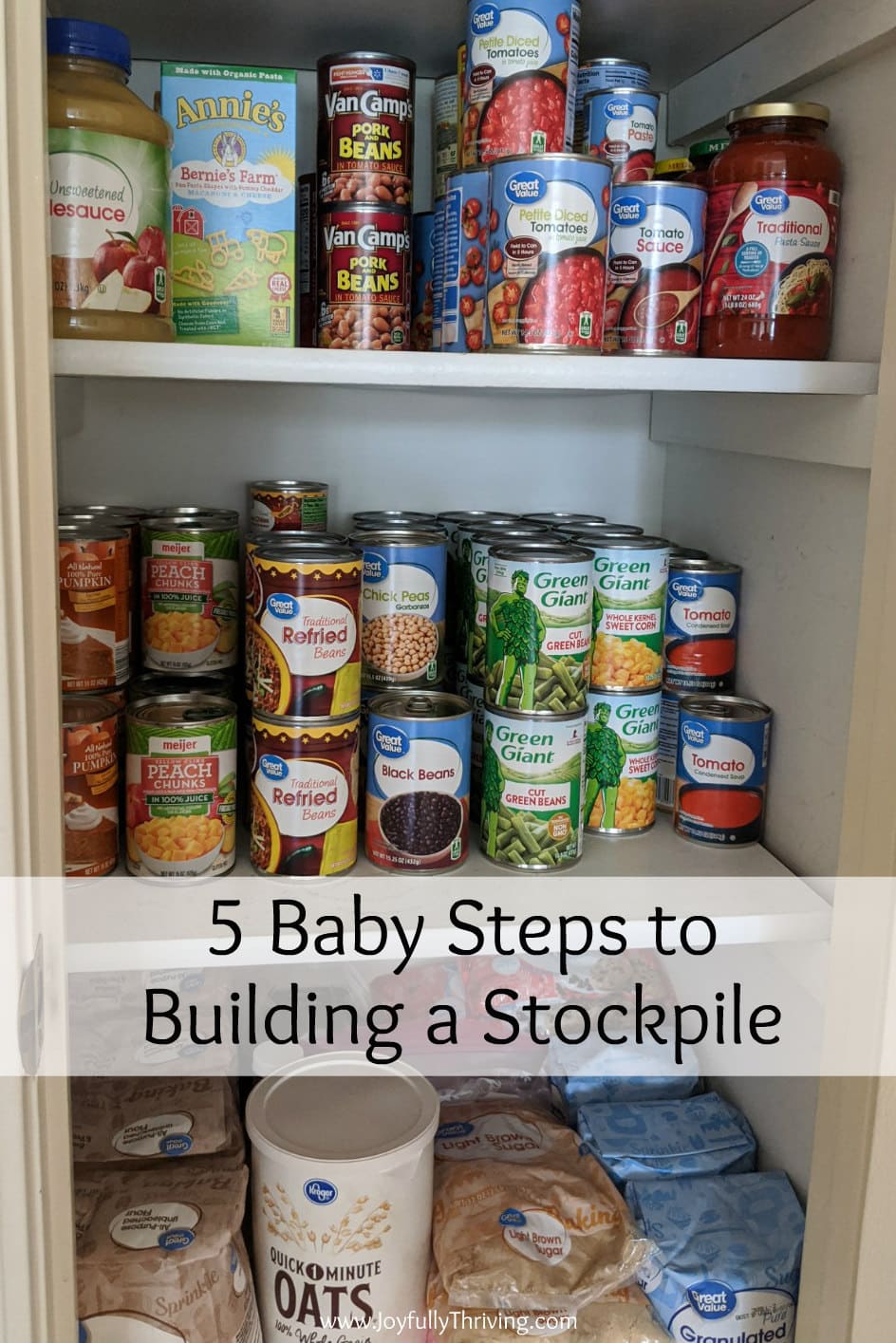
Baby Step 5: Increase your food stockpile as your family deems appropriate.
Beyond a 3 month stockpile, we are getting into what many people would classify as long term food storage. This involves rotating the food you have regularly, as you add to it. This is a much more involved plan, but if you are interested, this would be the next step in stockpiling!
It may involve buying foods outside of your typical canned goods, and purchasing more shelf stable meat.
It may involve purchasing more basic ingredients, such as larger quantities of sugar, flour, pasta, salt and grains, and storing them in food grade buckets.
It may involve purchasing foods prepared specifically for long term food storage, such as freeze dried fruits and vegetables that have a shelf life of 25-30 years.
As does every level a stockpile, it is up to you to determine what is best for you and your family. Is this something you want to make a goal?
Like with all the stockpiling baby steps above, make a detailed list of what you want in your long term food storage and slowly add to it as you find the time and funds. If you are ready to make your stockpile a priority, you will figure out a way to start building your food storage.
Remember that having a stockpile is a great thing to do for your family. I’d love to know…what step are you on the baby steps of food stockpiling?

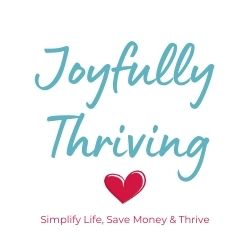

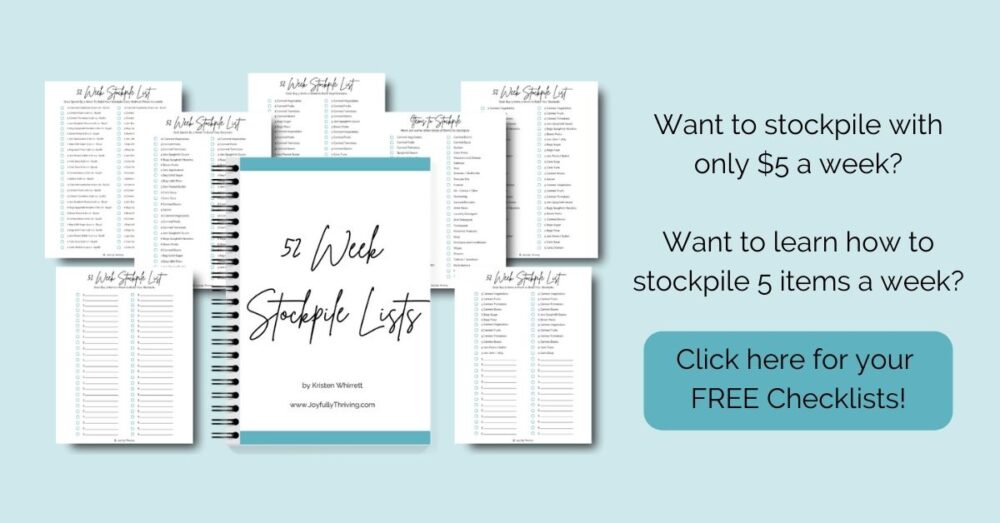
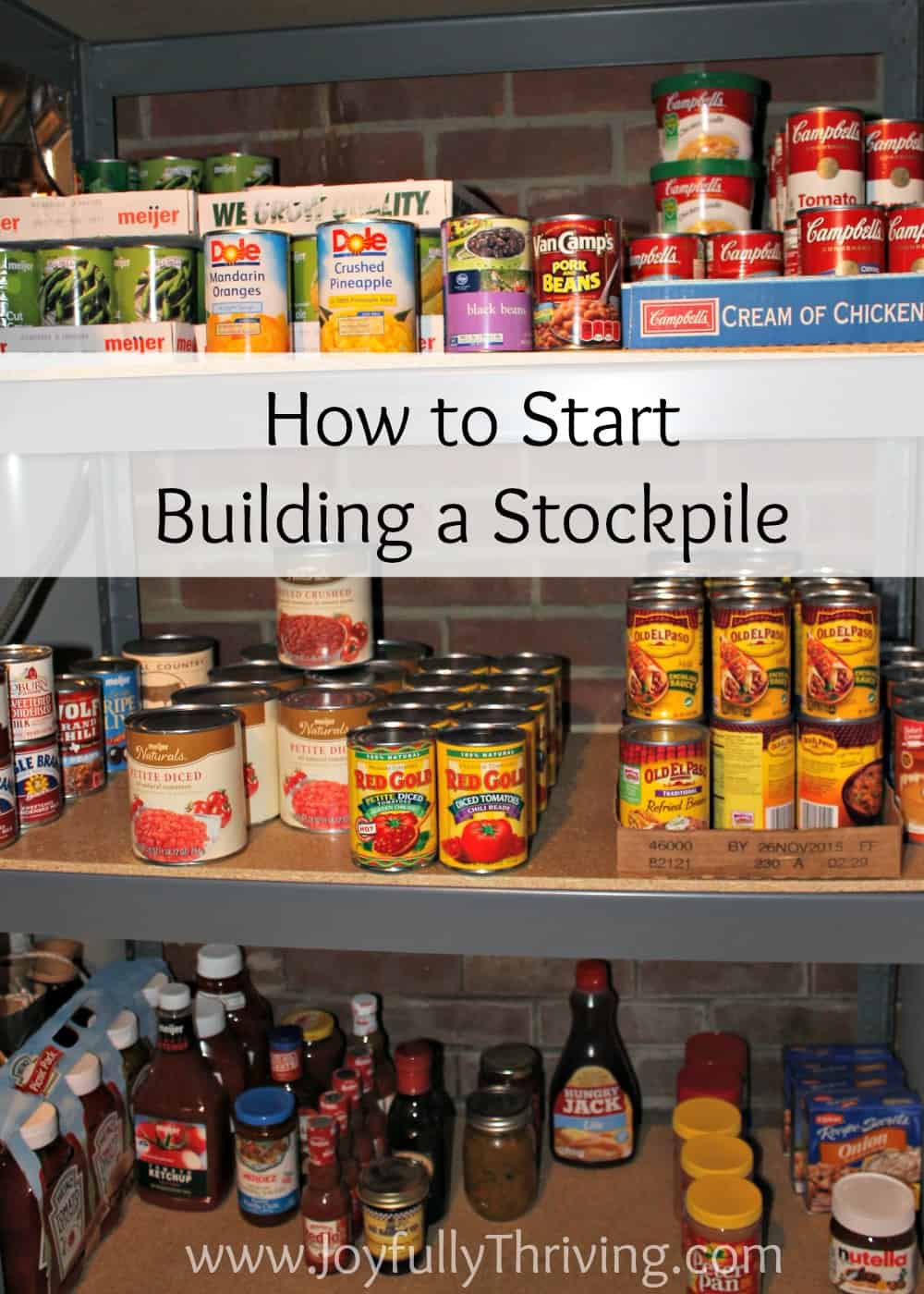
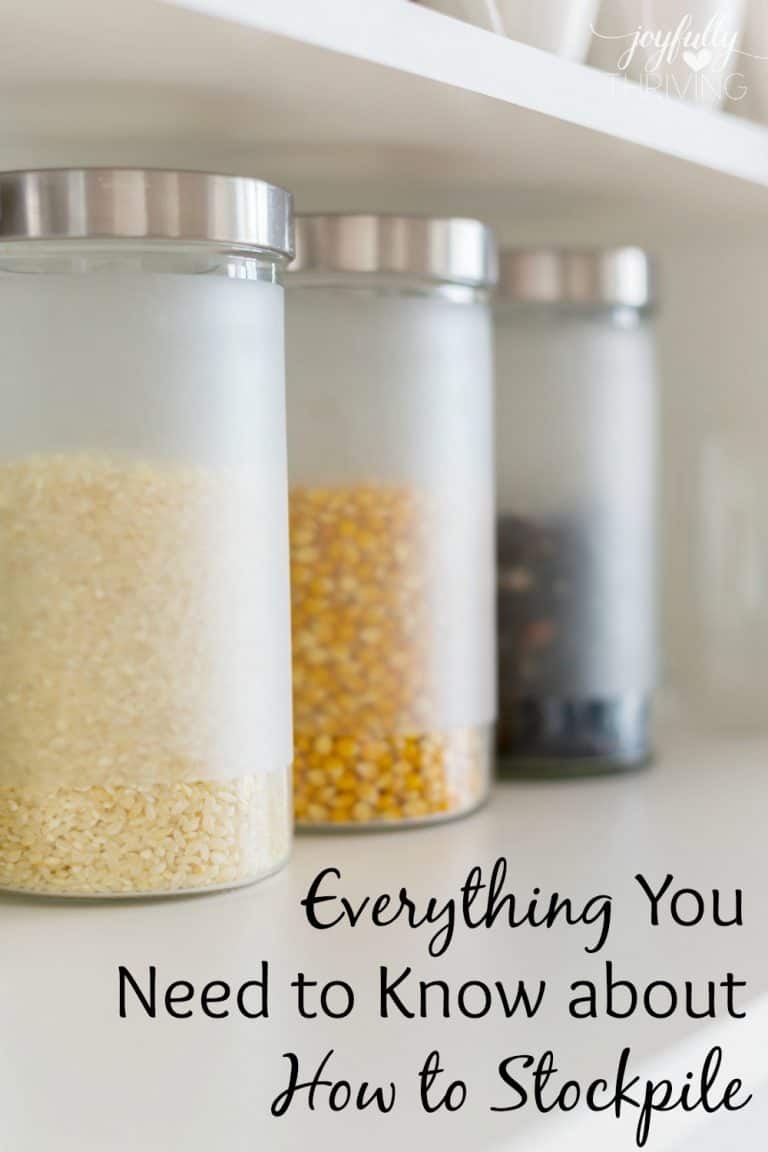
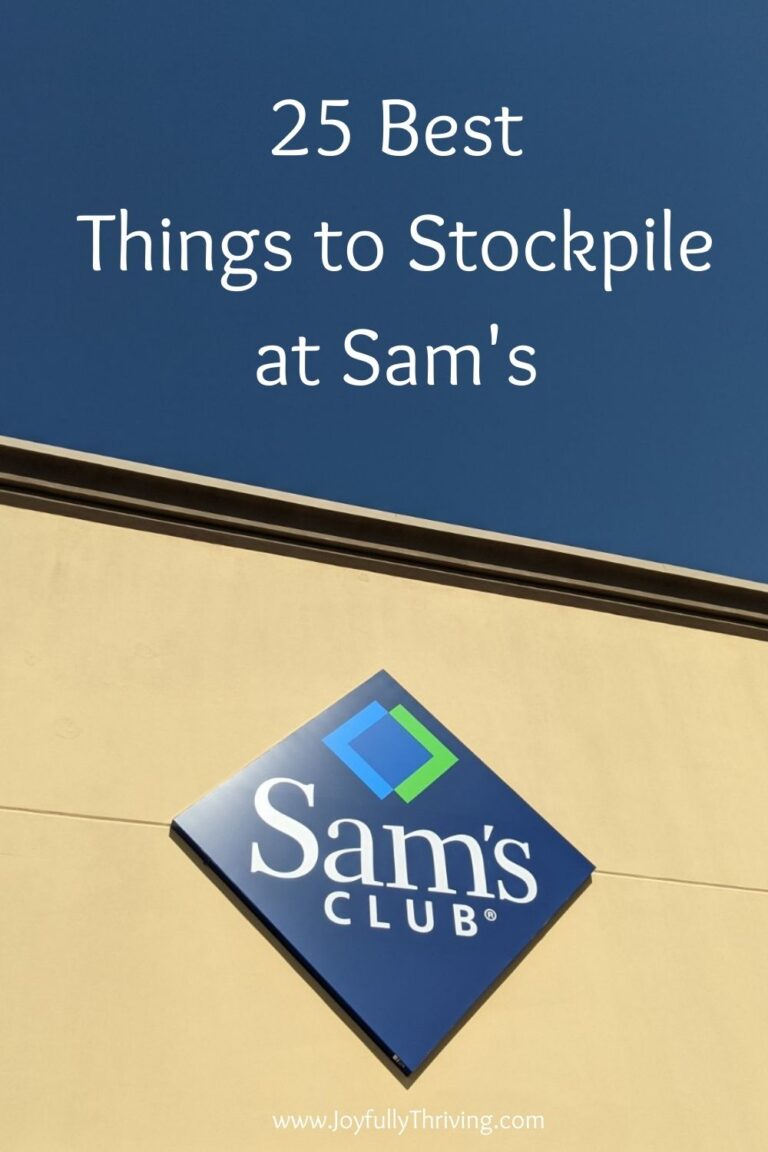
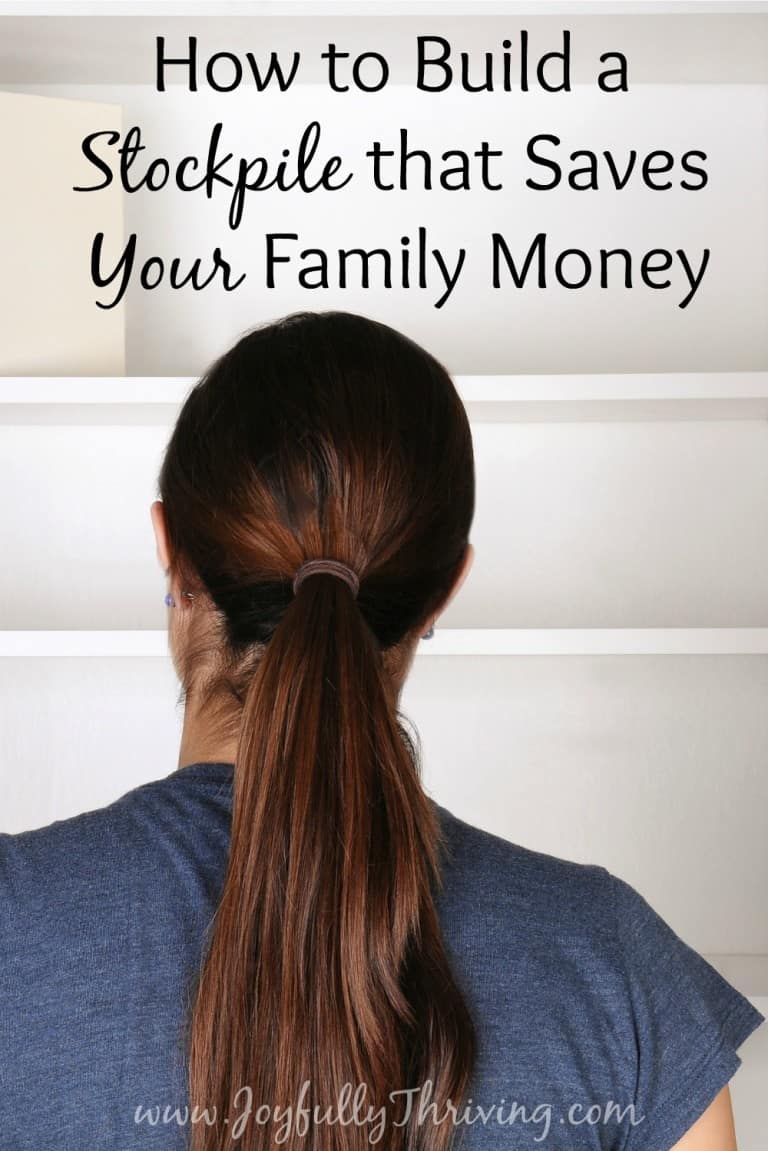
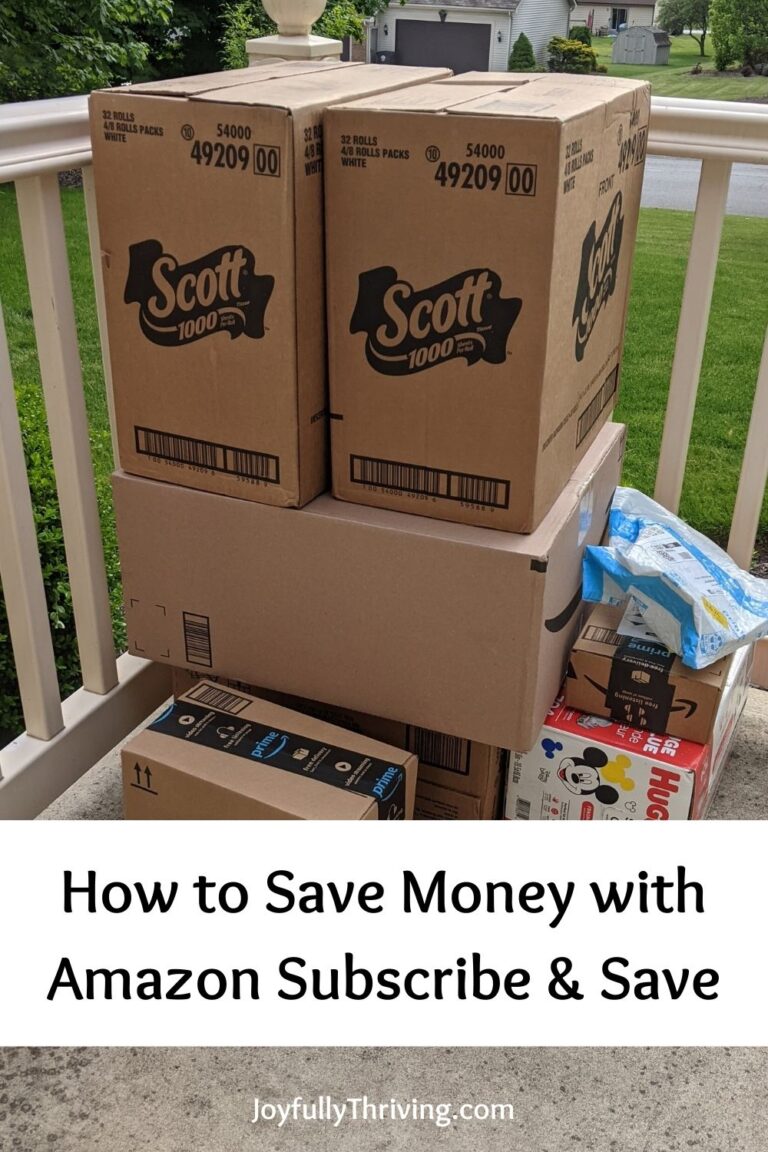
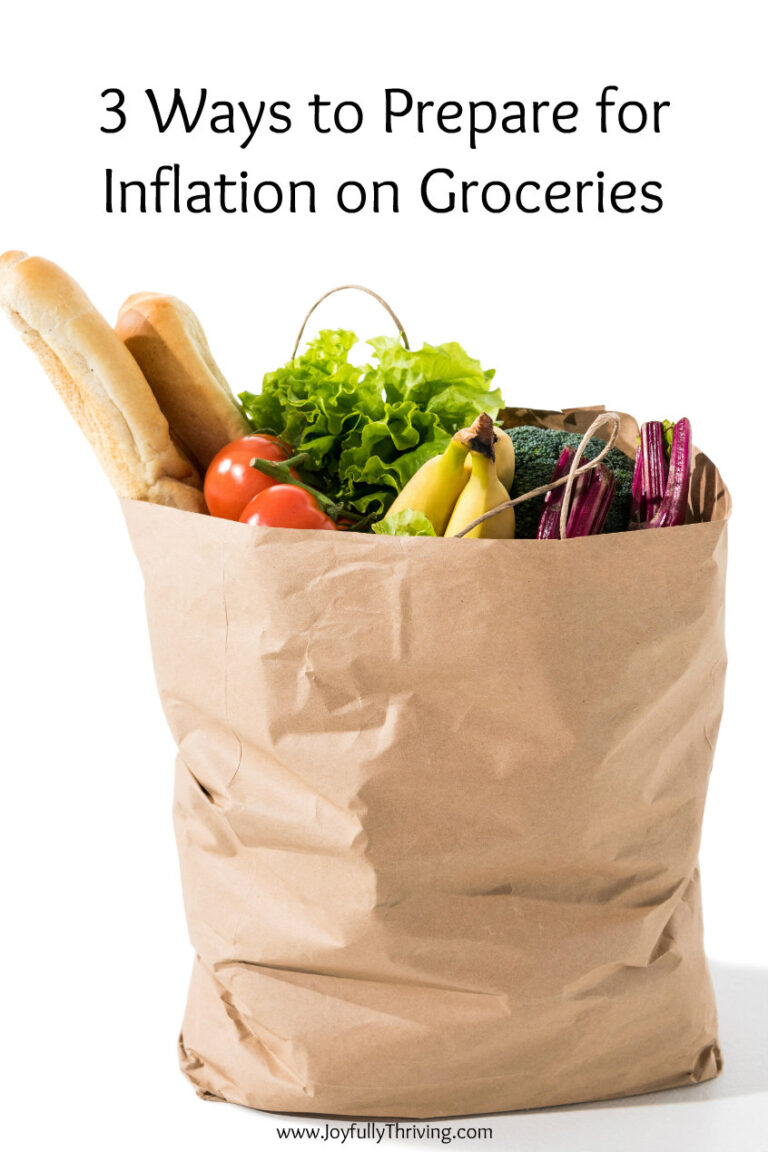
Thanks for breaking it down into specific ballpark amounts for 3 months. It is also helpful when you explained how many cans of each instead of just using pounds
I’m so glad you found it helpful, Martha! Yes, cans just make more sense logically to me as well. Happy stockpiling!
Pretty sure I’m between 4 & 5. We could stretch what we have to get to three months. It might get interesting though! Some things I have more than three months of. Just trying to fill the gaps right now. Also, trying to not go over my budget. We decided to take October off and breath a little. We are so much further ahead then years ago, but I still feel like we are behind in some areas.
I think that’s about where we are too. Trying to fill in gaps this month, while keeping a closer eye on my budget.
Breaking this down into steps makes it so much more manageable! Do you have tips for storing so much food and water, particularly for homes that don’t have a lot of extra storage space?
I store as little water as possible…. so I buy tomato paste instead of tomato sauce. I also try not to store air. I’ll combine packets of dried milk, so a box of sealed packets will hold 10 instead of the original 8. Dried beans, dried pasta, dried rice contain no water. I’ll use space creatively…. bedroom closet floor, under the bed, etc. Part of my strategy is to throw out things I don’t need (old clothes, a FEW books, record albums, etc.) to make room for what I do need. It hurt, but that previous baby carriage had to go! There are 4 of us in a 2 bedroom condo, and I homeschool, so lots of books as well. Space management is a constant over here, so I relate to your challenges! All the best to you! God bless!